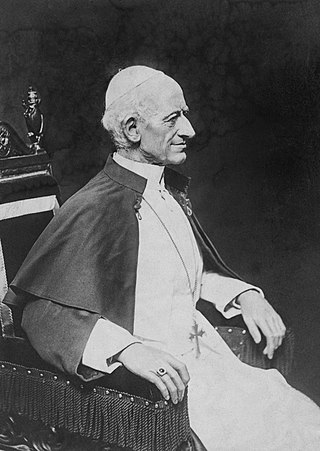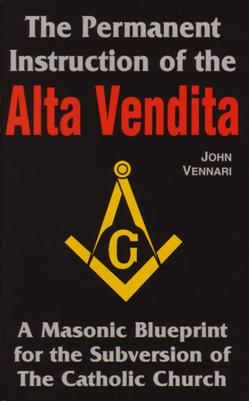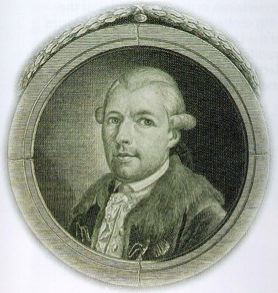The relations between the Catholic Church and the state have been constantly evolving with various forms of government, some of them controversial in retrospect. In its history, the Church has had to deal with various concepts and systems of governance, from the Roman Empire to the medieval divine right of kings, from nineteenth- and twentieth-century concepts of democracy and pluralism to the appearance of left- and right-wing dictatorial regimes. The Second Vatican Council's decree Dignitatis humanae stated that religious freedom is a civil right that should be recognized in constitutional law.

Rerum novarum, or Rights and Duties of Capital and Labor, is an encyclical issued by Pope Leo XIII on 15 May 1891. It is an open letter, passed to all Catholic patriarchs, primates, archbishops and bishops, that addressed the condition of the working classes.
Modernism in the Catholic Church describes attempts to reconcile Catholicism with modern culture, specifically an understanding of the Bible and Catholic tradition in light of the historical-critical method and new philosophical and political developments of the late 19th and early 20th centuries.
Americanism was, in the years around 1900, a political and religious outlook attributed to some American Catholics and denounced as heresy by the Holy See.
Catholic social teaching (CST) is an area of Catholic doctrine which is concerned with human dignity and the common good in society. It addresses oppression, the role of the state, subsidiarity, social organization, social justice, and wealth distribution. CST's foundations are considered to have been laid by Pope Leo XIII's 1891 encyclical, Rerum novarum, which advocated distributism. Its roots can be traced to Catholic theologians such as Thomas Aquinas and Augustine of Hippo. CST is also derived from the Bible and cultures of the ancient Near East.

Humanum genus is a papal encyclical promulgated on 20 April 1884 by Pope Leo XIII.

The Grand Lodge of Ireland is the second most senior Grand Lodge of Freemasons in the world, and the oldest in continuous existence. Since no specific record of its foundation exists, 1725 is the year celebrated in Grand Lodge anniversaries, as the oldest reference to Grand Lodge of Ireland comes from the Dublin Weekly Journal of 26 June 1725. This describes a meeting of the Grand Lodge to install the new Grand Master, The 1st Earl of Rosse, on 24 June. The Grand Lodge has regular Masonic jurisdiction over 13 Provincial Grand Lodges covering all the Freemasons of the island of Ireland, and another 11 provinces worldwide.

The Permanent Instruction of the Alta Vendita is a document originally published in Italian in 1859, claimed by some Catholics to have been produced by the highest lodge of the Italian Carbonari and written by "Piccolo Tigre".
Qui pluribus is an encyclical promulgated by Pope Pius IX on 9 November 1846. It was the first encyclical of his reign and written to urge the prelates to be on guard against the dangers posed by rationalism, pantheism, socialism, communism and other popular philosophies. It was a commentary on the widespread civil unrest spreading across Italy, as nationalists with a variety of beliefs and methods sought the unification of Italy.
Pope Leo XIII's papal encyclical on the subject of Freemasonry in Italy, known both by its Italian incipit Dall'alto dell'Apostolico Seggio and its Latin incipit Ab apostolici Solii celsitudine, was a promulgated on 15 October 1890.
Praeclara gratulationis publicae is an apostolic letter of Pope Leo XIII promulgated on 20 June 1894.
Officio sanctissimo, subtitled "On The Church in Bavaria", was a papal encyclical published by Pope Leo XIII in 1887. It recalled the continuous history of Catholicism in Bavaria; and praised the people's resistance to the Kulturkampf. It also condemned Freemasonry, calling it a "sect of darkness."
Custodi di quella fede was a papal encyclical promulgated by Leo XIII in 1892 addressed to the Italian people.
Inimica vis is a papal encyclical addressed to the Catholic bishops of Italy. It remarked on the multiple condemnations of Freemasonry over the preceding century and a half and concentrated on the local difficulties of the Italian church. It was promulgated by Leo XIII in 1892.

Denis Fahey, C.S.Sp. was an Irish Catholic priest. Fahey promoted the Catholic social teaching of Christ the King, and was involved in Irish politics through his organisation Maria Duce. Fahey believed that "the world must conform to Our Divine Lord, not He to it", defending the theological concept of the Mystical Body of Christ. This often saw Fahey in conflict with systems which he viewed as promoting "naturalism" against Catholic order – particularly communism, freemasonry and rabbinic Judaism. His writings were deeply anti-Semitic, Fahey stating that "we must combat Jewish efforts to permeate the world with naturalism. In that sense, as there is only one divine plan for order in the world, every sane thinker must be an anti-Semite".

The Illuminati is a name given to several groups, both real and fictitious. Historically, the name usually refers to the Bavarian Illuminati, an Enlightenment-era secret society founded on 1 May 1776 in Bavaria, today part of Germany. The society's stated goals were to oppose superstition, obscurantism, religious influence over public life, and abuses of state power. "The order of the day," they wrote in their general statutes, "is to put an end to the machinations of the purveyors of injustice, to control them without dominating them." The Illuminati—along with Freemasonry and other secret societies—were outlawed through edict by Charles Theodore, Elector of Bavaria, with the encouragement of the Catholic Church, in 1784, 1785, 1787 and 1790. During subsequent years, the group was generally vilified by conservative and religious critics who claimed that the Illuminati continued underground and were responsible for the French Revolution.
Continental Freemasonry, otherwise known as Liberal Freemasonry, Latin Freemasonry, and Adogmatic Freemasonry, includes the Masonic lodges, primarily on the European continent, that recognize the Grand Orient de France (GOdF) or belong to CLIPSAS, SIMPA, TRACIA, CIMAS, COMAM, CATENA, GLUA, or any of various other international organizations of Liberal, i.e., Continental Freemasonry. The larger number of Freemasons, most of whom live in the United States–where Regular Freemasonry holds a virtual monopoly–belong to Masonic lodges that recognize the United Grand Lodge of England and do not recognize Continental Freemasons, regarding them as "irregular".

Holy See–France relations are very ancient and have existed since the 5th century. They have been durable to the extent that France is sometimes called the eldest daughter of the Church.
George Francis Dillon was a 19th-century Catholic missionary and writer from Ireland. He became well known in 1884 for having given conferences in Edinburgh about what he claimed to be a Masonic war against Christian civilisation. His speeches were later compiled with his best-known book, War of Anti-Christ with the Church and Christian Civilization. After being read a summary of this work, Pope Leo XIII approved it and funded the publication of an Italian version.
The question of whether Freemasonry is anticlerical is the subject of debate. The Catholic Church has long been an outspoken critic of Freemasonry, and some scholars have often accused the fraternity of anticlericalism. The Catholic Church forbids its members to join any Masonic society under pain of interdiction. Freemasons usually take a diametrically opposite view, stating that there is nothing in Freemasonry that is in any way contrary to Catholicism or any other religious faith.









